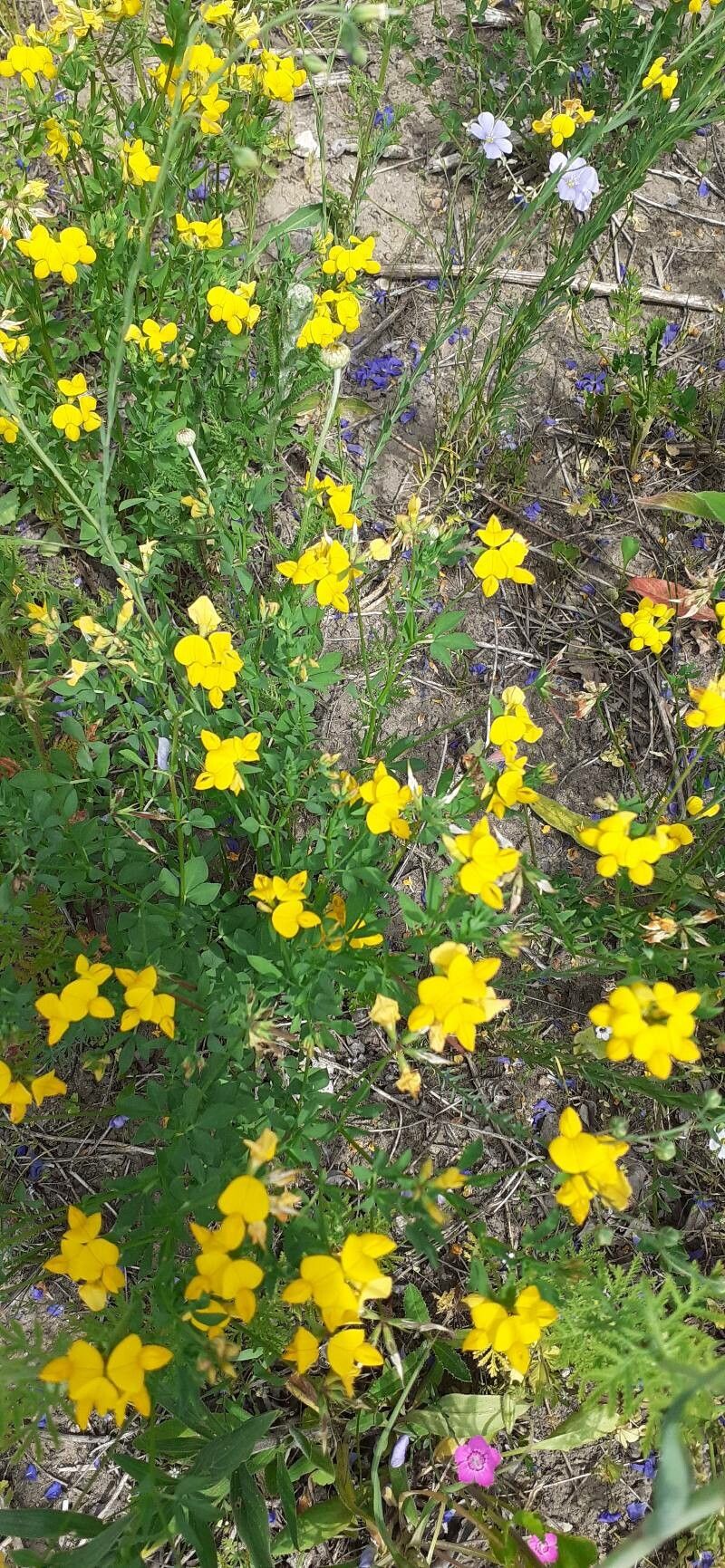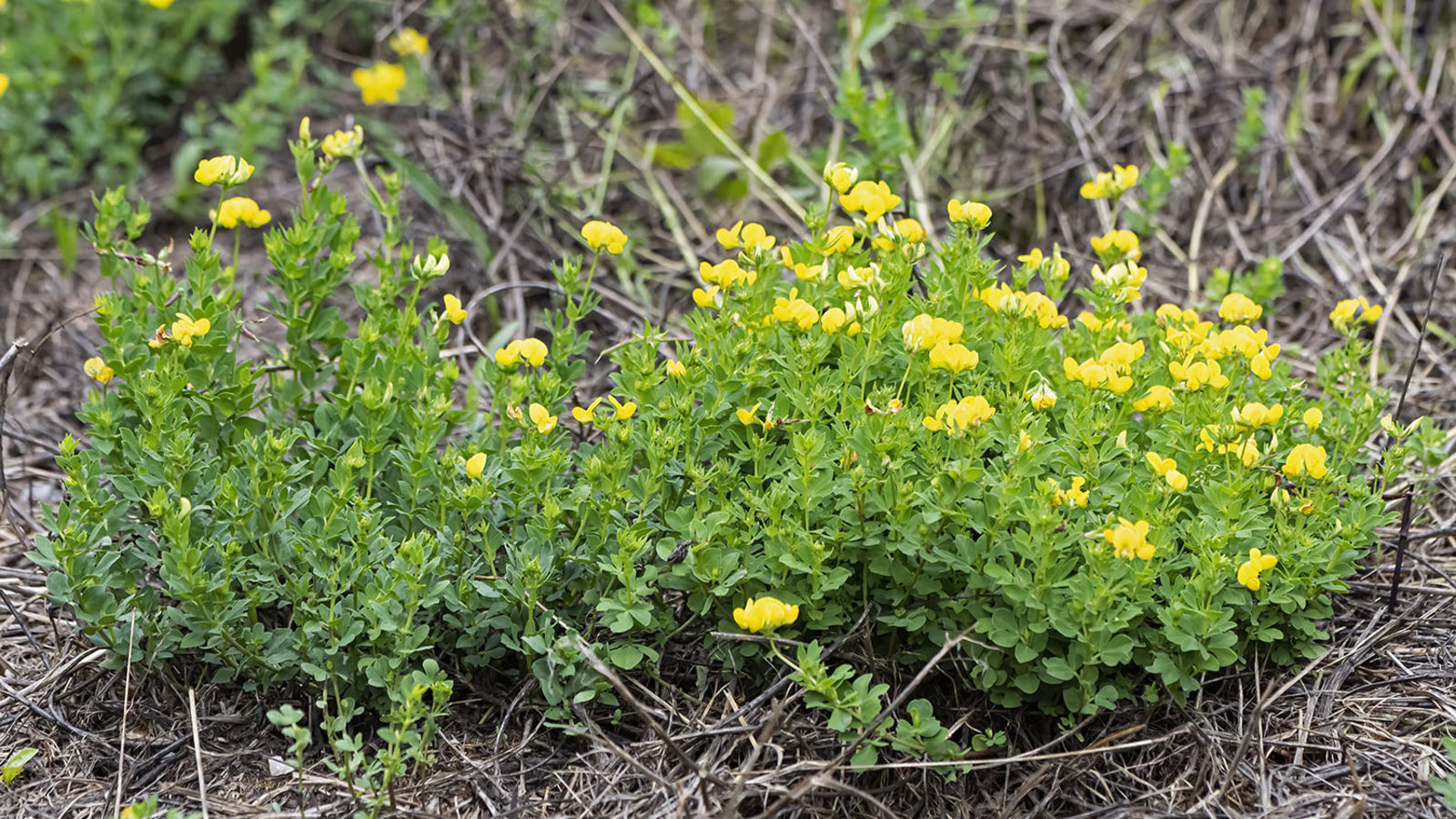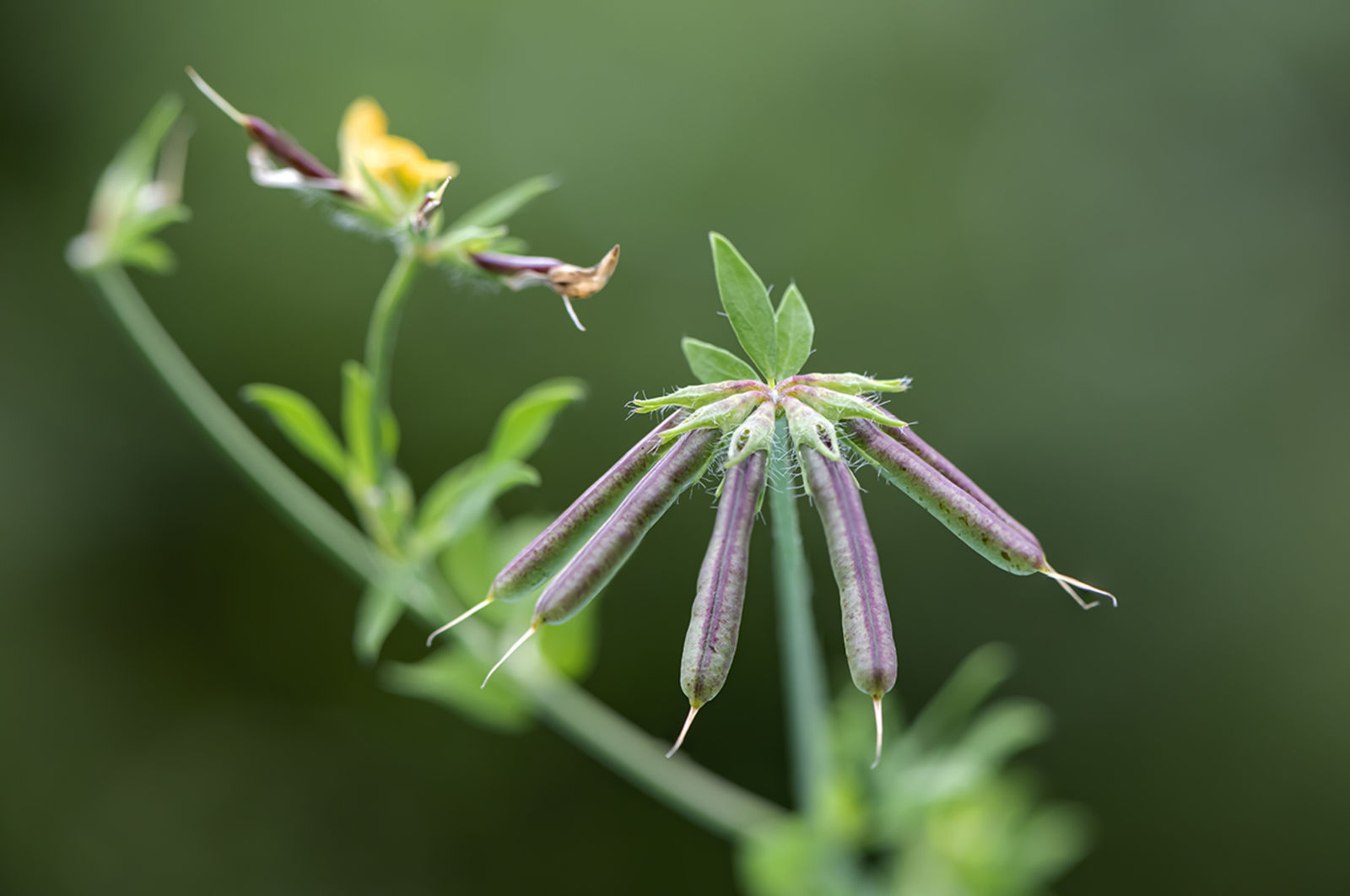Greater Bird's-foot Trefoil
lotus pedunculatus
Also known as: ["Greater Bird's-foot Trefoil","Greater Trefoil"]
Overview
A perennial herbaceous plant native to Europe and parts of Asia, known for its yellow flowers and trifoliate leaves.
Benefits & Perks
["wildlife attractant (bees, butterflies, birds)","drought tolerant","shade tolerant"]
Botanical Classification
| Phylum: | Magnoliophyta |
| Class: | Magnoliopsida |
| Order: | Fabales |
| Family: | Fabaceae |
| Genus: | Lotus |
| Botanical Name: | Lotus pedunculatus |
Plant Characteristics
Basic Information
- Category: Herbs & Weeds
- Suitable Location: bog garden or pond edge
- Suitable For:
- Is Weed: No
- Allergenicity: low
Environmental Needs
- Climate: {"temperatureRange":"5–25°C"}
- Hardiness: {"zones":"8–10"}
- Misting: rarely required, only if ambient humidity is very low
- Drainage: Moderately well-draining; should not remain waterlogged but should not dry out completely.
- Soil Type: Rich, loamy soil with good organic matter; well-draining but moisture-retentive.
Maintenance Level
- Maintenance Level: low
- Toughness Level: moderate
- Pruning Frequency: Light pruning can be done anytime; major pruning in late winter or early spring before new growth begins.
- Pruning Intensity: Light to moderate; avoid heavy pruning unless necessary to control size or shape.
Care Details
Ideal Sunlight Coverage:
Full sun to partial shade (4–6 hours of direct sunlight daily); tolerates partial shade in hotter climates to prevent scorching.
Sunlight Tolerance Tips:
Acclimate plants gradually to intense sunlight; provide shade during peak afternoon heat in hot regions; adjust placement based on seasonal light intensity.
Care Requirements
Care Difficulty
easymoderate
Sunlight
full sun to partial shade
Rotate plant weekly for even light exposure; use sheer curtains to filter intense sunlight; avoid placing in drafty areas with fluctuating light.
Watering
every 7–10 days during growing season, reduce in winter
Water thoroughly until excess drains; allow top inch of soil to dry slightly between waterings; avoid letting roots sit in standing water.
Soil
moist, fertile, slightly acidic loam
pH: Slightly acidic to neutral (pH 6.0–7.0).
Ensure soil is not compacted; avoid heavy clay soils; maintain consistent moisture levels.
Temperature
Prefers cool to moderate temperatures (60–75°F / 15–24°C); tolerates mild frosts but thrives in cooler conditions.
Monitor temperature fluctuations; use shade cloth in summer; insulate roots in winter.
Fertilizing
every 4–6 weeks during active growth
Apply fertilizer after watering to prevent root burn; flush soil occasionally to prevent salt buildup; use organic options like compost tea for gentle feeding.
Propagation
Methods
Stem cuttings or division of rhizomes; stem cuttings are more common for home growers.
Step-by-Step Propagation Guide
- Take 4–6 inch stem cuttings with at least two nodes.
- Remove lower leaves.
- Dip in rooting hormone (optional).
- Plant in moist medium.
- Keep warm and humid.
Best Time: Spring or early summer when the plant is actively growing.
Environment
Warm, humid environment with indirect light; maintain consistent moisture in the medium.
Medium
Well-draining potting mix with perlite or sand; can also root in water initially.
Hormone
Rooting hormone is optional but recommended for faster root development.
Timeline
Roots may develop in 3–6 weeks; new growth typically appears within 2–3 months.
Tools Needed
Pruning shears, rooting hormone, small pots, well-draining medium, plastic wrap or propagator.
Quick Tips
Use sharp, sterile tools to prevent infection; maintain high humidity with a plastic cover; avoid direct sunlight during rooting.
Pruning & Repotting
Pruning Guide
Method
Pinch back tips for bushier growth; cut stems just above a leaf node or bud; remove dead or yellowing leaves at the base.
Pruning Plan
Prune to maintain shape, encourage bushier growth, and remove dead or diseased foliage; focus on removing spent flower stems and leggy growth.
Tools
Pruning shears, sharp scissors, gloves.
Checklist
Sterilize tools; prune dead or damaged growth; shape as needed; clean up debris after pruning.
Repotting Guide
Best Season
Early spring before active growth begins.
Pot Size
Choose a pot one size larger (1–2 inches wider in diameter) than the current one.
Method
Remove plant gently; trim any circling roots; place in a slightly larger pot with fresh, well-draining soil; water thoroughly after repotting.
Suggestions
Repot every 2–3 years or when roots fill the container; necessary to refresh soil and provide space for growth.
Checklist
Select appropriate pot size; prepare fresh soil mix; trim roots if necessary; water well after repotting; place in appropriate light.
Advanced Care Tips
Watering Mastery
Watering Checklist
Check soil moisture before watering; water deeply; ensure drainage; adjust frequency seasonally.
How to Apply Water Properly
Water directly at the root zone, ensuring even saturation to a depth of 6–8 inches; water early in the morning to minimize evaporation and allow foliage to dry; ensure proper drainage to prevent root rot.
Watering Schedule Tips
Keep soil consistently moist but not waterlogged; water deeply 2–3 times per week during active growth, reducing frequency in winter dormancy.
Soil Improvement
Add compost or well-rotted manure to enhance fertility; incorporate perlite or sand for better drainage; use mulch to retain moisture and regulate soil temperature.
Temperature Stress Management
Signs of Temperature Issues
Chlorosis or leaf scorch in excessive heat; stunted growth or bud drop in prolonged cold.
Cold Stress
Slows metabolic processes, causing reduced growth and potential leaf damage in freezing temperatures.
Solution: Protect with frost cloth or mulch in cold spells; move containers indoors or to a sheltered location; avoid overwatering in cold conditions.
Hot Stress
Leaves may wilt, scorch, or drop; growth may become stunted due to excessive heat.
Solution: Provide shade during peak heat; increase humidity with misting; water more frequently but avoid waterlogging.
Fertilizing Guide
Fertilizing Checklist
Check fertilizer label for NPK ratio; dilute correctly; apply during active growth; avoid winter feeding.
Fertilizing Method
Use balanced liquid fertilizer diluted to half strength every 4–6 weeks during growing season (spring to early fall); avoid fertilizing in winter.
Common Problems & Solutions
Toxicity Warning
Cats
Non-toxicLotus pedunculatus is not toxic to cats. It does not contain any known toxic substances that would harm feline health.
⚡ Toxic If:
Not applicable
Dogs
Non-toxicLotus pedunculatus is not toxic to dogs. There are no known toxic compounds in this plant that would pose a risk to canine health.
⚡ Toxic If:
Not applicable
Humans
Non-toxicLotus pedunculatus is generally considered non-toxic to humans. It is not known to produce any toxic compounds that would cause adverse effects upon ingestion or contact.
⚡ Toxic If:
Not applicable
Frequently Asked Questions
Q: Is Lotus pedunculatus edible?
A: Yes, it is edible and often used as forage for livestock.
Q: Does Lotus pedunculatus attract wildlife?
A: Yes, it attracts bees, butterflies, and birds due to its nectar-rich flowers.
Q: How much maintenance does Lotus pedunculatus require?
A: It requires low maintenance, making it suitable for low-effort gardens.
Quick Reference
| Family: | Fabaceae |
| Care: | easy |
| Light: | full sun to partial shade |
| Water: | every 7–10 days during growi |
Get Expert Care Tips
Download the Plantious app for personalized care reminders and plant identification!
Google Play App Store








